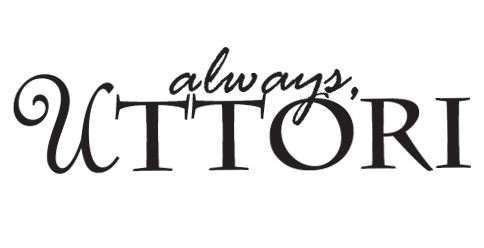
Identity. What is it? How is it defined? Does the definition have enough clarity to be used as a constant that can bridge a wide variety of situations? Some say no. There are many in the social sciences who believe that a person’s identity cannot operate independently from a social context – even a hermit is a hermit because he rejects society – so changes in social structures lead to changes in the definition of identity, thereby making a clear and consistent definition of identity impossible.

The idea of an individual identity separate from a work or community (social) identity is actually a new(ish) concept, and can also be considered very Western in nature. With contributions to the idea of individuality outside a “collective” coming from the likes of Anna Freud, Carl Jung, Erik Erikson, and yes, even Katherine Cooks Briggs and Isabelle Briggs Myers. The understanding that we have of individual identity is just over a century old; much of our knowledge of individuality from a psychology perspective is just decades old. So, if the concept of individual identity, including the capacity to realize change, is in limbo because of shifting cultural views on identity, does that mean that self-understanding and self-actualization are impossible dreams?
Not so fast, regardless of the numerous opinions that exist regarding the validity of individual identity in the social sciences, the prevailing historical view is that while individual identity must, of necessity, root in and be defined by social groups (a family is a social group), individuality allows us the freedom (freedom is a social context) to connect, reject, or redefine our concept of self within the social sphere. In other words, the pursuit of individuality is already a process of goal setting and making resolutions. When we decide whether to accept social norms, or reject them, when we decide on a standard for the person that we wish to be, and when we move toward that standard, we are not only revealing certain aspects of social identity, we are performing what psychologists call an “organizing action”. Psychologists also believe that a person’s goals are integral to an individual’s concept of self. (Michel and Shoda, 1995).
If this is the case, then the act of setting goals that move us along a path of self-actualization is not only rational, but organizing action that leads to individual achievement can also be a lever to elevate an entire society, or group.
Personality frameworks play a significant role in establishing a starting benchmark for self-actualization efforts. Working from such a framework helps us to avoid the pitfalls of limited social networks, giving us the opportunity to set actualization goals that come from a broader understanding of human thought and capability. It is with this focus in mind that we are reviewing 2 emerging personality frameworks and assessing the potential of these frameworks to assist us in the pursuit of mastermind goals.
The Quantified Self
Quantified Self as Identity Framework
From a psychology perspective, the quantified self, also known as self-tracking, meta-life, archiving, or transhumanism fits neatly into the “you-are-what-you-do” school of psychology.
As Swedish psychiatrist Carl Jung is credited with the following quote: “You are what you do not what you say you’ll do,” the use of life data as the basis for quantification of identity seems the perfect amalgamation of identity theory, practice, and tool set.
Quantified Self Practices
QS practices focus on the implementation and measurement of daily life activities, including the 3 fs: food, fitness, and finance, as well as productivity, sleep, and health indicators. The resulting data is used to discover the hidden narrative of a life. In addition to personalized self-tracking, QS practices include meetups and social sharing of collected data. The meetups and social sharing (for example, using Twitter to share data from a run), act as a form of establishing social norms to improve outcomes and motivation.
Quantified Self Technology Tools
Even if you haven’t heard of the quantified self, chances are you are familiar with some of the tools used for data collection and analysis. QS practitioners use a wide range of tools. Activities are captured through wearables, computer, or pen and paper. Analysis is performed using common software, such as Excel. Common Tools for QS include:
-
- Activity Trackers (example: Fit Bit)
- Health Trackers (example: Samsung Health)
- Fitness Wearables (example: Garmin, Under Armour Smart Shoes)
- Excel Spreadsheets
Further Reading:
Understanding Quantified Selfers’ Practices in Collecting and Exploring Data
Self Tracking for Health and the Quantified Self
The Integrated Self 1 (The Big Five Version)
If the Quantified Self is an example of “You Are What You Do,” the Integrated Self views personality, and any aspect of actualization, as being founded in evolutionary biology, rather than the humanistic principles of Freud, Jung, and other early 20th Century psychologists. The underlying assumption of integrated self is that human beings evolved with certain “species type universals,” and that the development of these evolutionary genes enable humans to solve problems, forge alliances, develop language, and, together, create culture.
Integrated Self as Identity Framework
From a psychology perspective, the integrated self – not to be confused with the integrated self that focuses on the dimension of spirituality as an aspect of psychotherapy – examines the impact of 5 key forces on personality.
Integrated Self Practices
As a framework, many of the practices of Integrated Self have not yet been codified; however, suggestions from the originators include the following:
-
- Evolutionary Trait Adaptation Schemas
- Self-Narratives
- Goal Setting
Integrated Self Technology Tools
The Integrated Self utilizes standard tools of self reflection. Measures for assessment include evolutionary biological trait schemas, longitudinal studies, and narrative learning.
-
- Evolutionary Biology
- Disposition of Signatures – Including extraversion, introversion, dominance, etc.
- Characteristic Adaptations, including motives, goals, plans, strategies, values
- Life Narratives and Journaling
- Culture and Social Influence
Further Reading:
Integrated Personality Science: The Big 5
CONCLUSION
Personality frameworks reflect our search for self-actualization through a foundational understanding of ourselves and others. When we use these frameworks to push ourselves forward on an individual basis, we move forward collectively. For those who wish to reach the heights of their ambitions, using the information personality science frameworks (especially those with a measurable analytic foundation), along with right-fit technology tools, is an example of the best form of resolution-, or goal-, setting. Such frameworks can act as a counter to social group biases that may limit the pursuit of goals, and in addition, can be the starting point to a mindset for living a wholly actualized life, as opposed to participating in goal setting as nothing more than an annual social practice.
In the search for mastery, it is best to remember the words of life coach, Rasheed Ongunlaru: “You are not merely your colour, class, gender – and so on – these are quite narrow things. You are not the ideas you are given and gather. You are not what you own or lay claim to. You are not even your life story – for that changes through time, perspective, emphasis and many things. You are what resides before, between and beyond all these things.” So how does goal setting interact with personality frameworks? It seems to me that it is only through embracing frameworks, which span the before, the between, and the beyond of culture and social group norms can we, as individuals, become.
